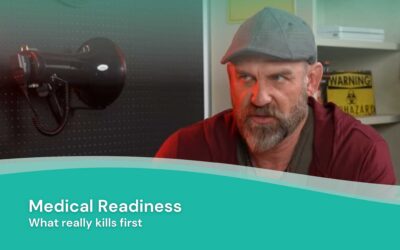
(Don’t be caught without your Jase Case)
California is again being slammed with record rainfall, mud and rockslides are forcing road closures. Widespread evacuations are still in place across the state. Snowfall is continuing to plague the Sierra mountains leaving many stranded without available help due to the amount of snow making roads impassable.
In addition:
- Water restrictions have ended for the 7 million residents in the Metropolitan Water District of Southern California. These residents had endured one of the most long and fierce droughts in recent history.
- As of Tuesday, March 15, Santa Barbara County cancelled evacuation orders and issued warnings for residents to remain vigilant with some areas still flooding, rock and mudslide hazards and potential for more storm related damage.
- However, evacuation orders remained in place for Monterey County after a 400-foot levee burst on the Pajaro River flooding communities and farms due to runoff after last week’s 10th atmospheric river. Crews are working diligently to repair the levee. Residents have been forced to seek shelter in local motels and evacuation centers.
- Snowfall in the Sierra mountains near Donner Pass has totaled over 54 feet, along with another incoming storm expected to dump up to another 10 feet of snow in the mountains. This will result in the risk of further roof collapses, impassable roads and gas leaks and explosions.
- Warm air in the mountains has triggered multiple avalanche and flash flood warnings.
- Not to be outdone by the snow, rain, flooding and avalanches, an EF-1 tornado carrying with it 90 mph winds touched down in Tuolumne County on Saturday, uprooting trees, and producing 1 inch hail along with flash flooding.
The floodwaters will eventually recede, bringing with it post-flood disease outbreaks
Note: Follow your local health department and authorities’ instruction and guidance before reentering your flooded home or other buildings. Be sure to have gloves, mask (properly fitting N95 at the very least) and goggles along with protective boots or shoes when venturing into any post flood areas.
Receding floodwaters along with warmer air create an ideal breeding ground for disease outbreaks.
Sewage spills, contaminated waste floating in waters, livestock feces along with harmful chemicals settle in buildings, cars, and surrounding landscapes, polluting everything it touches. It will be almost impossible to not be exposed to some sort of health hazard post flood.
Local health departments, clinics and hospitals will have a high likelihood of being overrun with flood related disease outbreaks.

The following is a list of common disease outbreaks following a flood
Jase case antibiotics are listed in parenthesis- note that the antibiotics in the Jase Case can treat many of these diseases:
Viruses and bacteria– transmitted through contaminated water (ingestion or contact), food, items that hold food or water, or rodents.
C difficile- (Metronidazole)
Giardia-(Metronidazole)
Salmonella (Ciprofloxacin if symptoms are severe)
Skin infection (staph)- (Doxycycline)
Tetanus- (Doxycycline or metronidazole)
Tularemia- (Doxycycline or ciprofloxacin)
Typhoid fever- (Ciprofloxacin)
Hepatitis A- no known treatment, it usually runs its course
Vector borne diseases (mosquitos)
West Nile Virus- Supportive treatment only
Rotavirus- Supportive treatment only
Mold is a major health concern following a flood. It can be invisible and spread within a matter of days. If you have a weakened immune system, you can become seriously ill from mold.
At risk populations include
- Those receiving chemotherapy
- Have had an organ transplant
- Using corticosteroids
In addition, if you have any respiratory issues such as asthma, don’t enter any building after a flood without proper safety equipment (this goes for everyone including at risk persons)
- Properly fitting N-95 mask or higher level protection
- Gloves
- Goggles
- Brooke Lounsbury, RN
Medical Content Writer
Lifesaving Medications
Recent Posts
Keeping you informed and safe.
Medical Readiness: What Really Kills First
When Disaster Strikes, It’s Not Hunger or Thirst That Takes the First Lives In every disaster zone, from hurricanes in the Caribbean to war zones in Ukraine, the pattern is the same. People worry about food and water, but it’s infection that kills first. A small wound...
Exploring Dr. William Makis’ Hybrid Orthomolecular Cancer Protocol: Focus on Ivermectin and Mebendazole/Fenbendazole
Exploring Dr. William Makis’ Hybrid Orthomolecular Cancer Protocol: Focus on Ivermectin and Mebendazole/Fenbendazole *Disclaimer: This article is for educational purposes and does not constitute medical advice. Always seek professional guidance.* In the evolving...
Be Prepared for Life’s Unexpected Moments
3 Reasons EVERYONE should have emergency medications avaiable. It's all about access—access to medications and care when you need it most. And when things happen outside of your control that access can disappear.Below are 3 examples of how easily this access can be...



